[Trade Journal]
Publication: Electrical World
New York, NY, United States
vol. 7, no. 9, p. 93-94, col. 1-3
A History of the Telegraph in America.
About two years ago, in referring to some personal changes then going on among telegraphic companies, we ventured the assertion that telegraphic history should be more than a merely dry record of inventions, patents and corporations. It is sometimes demanded of historians that they shall be as precise and colorless in their accurate statements as though they were describing the processes of chemical action, or were detailing observations on the habits of a colony of ants. But while severe, ascetic accuracy of this kind may have its merits, it will never
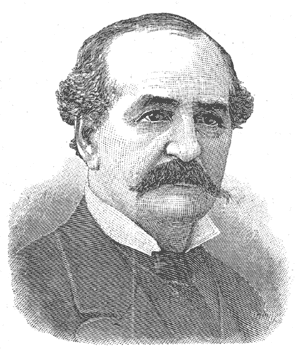 |
| David Brooks. |
satisfy the public, nor indeed can it do justice to men and events. In true history, as in the poetry that pleases James Russell Lowell, there should always be "the drop of human blood." the beat of human hearts. He will be the popular as well as the best historian who, careful to have his dates verified, and giving full weight to official documents, will seek to make his narrative somewhat less cold and rigid than the postulates and enunciations of mathematical science. He will not disapprove of bright or sombre hues; he will on occasion use the broad brush. He will seek in dusty bundles of old letters for the secret motives of men; he will not despise fashion books, ballad broadsheets, current catchwords, or the cartoons that are the slang of portraiture. Everything that can give atmosphere and animation to the picture will be seized and prized by him, and then his readers will not see the men of old as trees walking, but as beings of like passions, foibles and virtues as themselves. His work will not be a dry list of names, dates and events, but history done to the quick, throbbing in every page with the emotions of bygone daya, instinct with poetry and life.
Such is our conception of what general history should be, or the history of any one department of human discovery, endeavor and achievement; and it is because the book in so many respects comes up to a very lofty ideal of this nature, set before himself by the author of it, that we welcome with great pleasure the approaching republication of Mr. James D. Reid's "The Telegraph in America," advance sheets of the second edition now lying before us. Mr. Reid, as is well known, was an early associate and friend of Morse, was also the first telegraph superintendent in
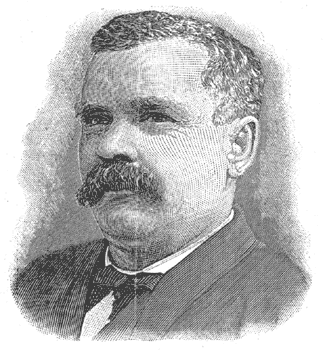 |
| C. W. Hammond. |
the world, and through all the many vicissitudes of his long and honorable life has been so closely identified with the advance of telegraphy here, that it has been epitomized in his personal career. This in itself is a remarkable qualification for the office of historian, insuring an acquaintance with the men named and an intelligent apprehension of the significance of events. But to all his other eminent merits, Mr. Reid adds the possession of an unusually direct, clear and graceful literary style, as well as an enviable delicacy of wit and a commendable liberality of sentiment. Of course there are various matters in connection with a subject so overloaded with vexed questions as telegraphy, in regard to which Mr. Reid does not win entire approval from everybody for his version of them; but taken all in all, his book is one that will stand, with growing credit to its author, as a brilliant yet trustworthy history of the early days of American telegraphy.
The keynote is struck by Mr. Reid in the following passage: "It is not claiming unusual wisdom when it is asserted that the power of the telegraph as the medium of human intercourse in all its growing forms is largely dependent upon the character, intelligence, energy and prudence of the men who direct it. Telegraph history is more a story of men than of wires. Some of the very features which indicate personal refinement touch telegraphic administration. The perfection of the telegraph as a mere physical structure is that it marks the perfection of polite conversation, the absolute absence of interruption. It is remarkable how the fine instincts of a good man regulate his ordinary life and labor, and how other natures are assimilated and affected thereby;" Mr. Reid's position or argument is our own. Everything that can knit a community together, cause a rapid interchange of sentiment and ideas, and annihilate distance, is of the greatest good to the largest number. To draw a parallel, the running of express trains implies efficiency of service, punctuality, the highest type of executive officer, the finest make of locomotive, the smoothest roadbed, concentration of skill and experience, the knitting of every nerve and energy, and the performance of downright good work straight along the line by all concerned. In the same manner the dispatch and receipt of messages by telegraph or telephone implies the higher development of social, political and commercial life, and since the history of the telegraph is rather a story of men than of wires, it becomes highly interesting to know something of the men who have helped to
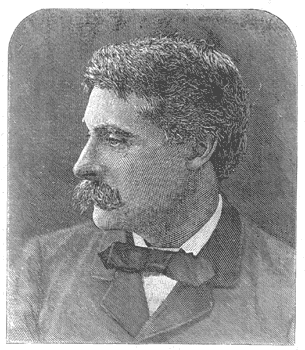 |
| Albert F. Chandler. |
organize, or are now operating the telegraphs of the country. Hence one of the features of especial attractiveness in this second edition is the fine collection of wood engravings executed by Mr. Thomas L. Smart, whose name alone is a guarantee of faithful work. These new engravings, additional to the twenty-four steel plate portraits and the other illustrations, are of the following well-known men: Jay Gould, A. B. Chandler, R. H. Rochester, John B. Van Every, A. R. Brewer, J. J. Dickey, E. P. Wright, J. W. Holmes, R. T. Clinch, C. O. Rowe, David Brooks, W. J. Dealy, Geo. G. Ward, Willard Brown, Geo. A. Hamilton, Gerritt Smith, G. D'Infreville, J. E. Fenn, J. F. Wallick, I. N. Miller, W. C. Humstone, S. B. Gifford, E. A. Leslie. C. W. Hammond, T. Brennan, R. S. Guernsey and J. J. Kiernan. We have picked out a few of these engravings, haphazard, to show the generally high quality of the work. The personal details accompanying the woodcuts are, as might be expected, of a very interesting nature. Thus of Mr. A. B. Chandler, whose energies have carried him far beyond the range of telegraphy, we are told that he began work in 1857 in the service of the Vermont and Boston Bain Telegraph, Company, being stationed at West Randolph, Vt., and it is said of him in his later connection with the Western Union Company: "In every relation he proved himself more than equal to the duties assigned him, honoring every trust with conscientious assiduity, and by the unfailing politeness, fidelity and thoughtfulness with which he administered it." Mr. Chandler has interested himself in cabling and in electric lighting, but Mr. John Jay Dickey has come to the front in telephonic affairs west, being Vice-President of the Nebraska Telephone Company and of the Rocky Mountain Bell Telephone Company, in addition to having charge of the Western Union Third Central District, with 850 offices and 1,125 employes. Mr. Dickey, whose father was the late Chief Justice of the Supreme Court of Illinois, served as an operator on the Chicago & Rock Island Railroad from 1859 to 1863. He is naturally spoken of as "one of the most thoroughly wide-awake, active and efficient men in the Western service." In contrast, in some respects, with that western district comes the First Eastern District, of which Mr. Walter Coutant Humstone has charge. Mr. Humstone began his lifework in 1862 as a messenger boy at Poughkeepsie, and as he is only thirty-seven years of age he is a good example of rapid rise by merit. His district contains 1,136 offices, with a staff of about 3,000 employes. "The management of the office in New York alone is worthy of, and has appointed to it, a man of firstrate ability. * * * The work in it is incessant, day and night, and knows no holiday or Sabbath or rest, except to a limitation of the force when business relaxes. Connection with the round world makes the telegraph service like death, which 'has all seasons for its own.' Day
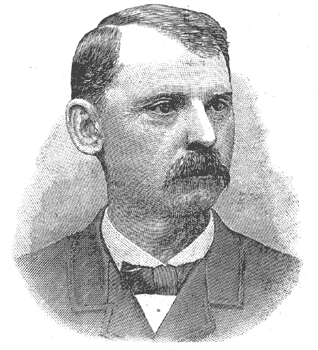 |
| John Jay Dickey. |
and night cease to have meaning when midnight telegraphs to high noon, and the twilight of England whispers to the sunset of Japan." Mr. Humstone has care also of 140 local cables with 752 conductors. As to Mr. Gerritt Smith, who entered the telegraphic service in 1853, under the Commercial House Printing Telegraph Company at Boston, a strong claim is made. "In the Western Union system, there are 140 quadruplex circuits, that is, 140 distinct sections of line on which the quadruplex mechanism is employed. These cover 41,970 miles of actual wire, and indicate as the product of the quadruplex system 125,190 miles of unseen or 'phantom' line, i. e., one visible and three invisible wires. After a thorough examination of these circuits under ordinary conditions, if was found that of these 125,910 miles only 83,940 were available, and that even of these one-third of the signals were irregular and uncertain. By Mr. Smith's improvement the quadruplex wires were brought up to their full mileage capacity of 125,910. Nor is this all. Wires of number 8 gauge, the largest used under ordinary conditions, when exceeding 300 miles in length, could not with the existing quadruplex mechanism be worked satisfactorily to exceed a mere duplex capacity. By the introduction of Mr. Smith's improvement, wires of number 8 gauge up to six hundred miles in length are made available for full quadruplex service, and it is not the least meritorious fact connected with this very useful improvement, that
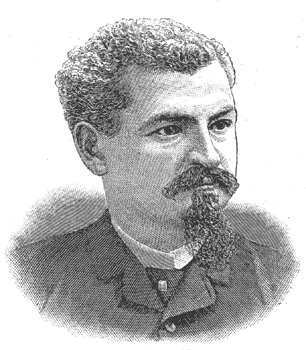 |
| Walter Coutant Humstone. |
as if to prove the fact that it had removed a formidable obstruction to telegraphic work, the quadruplexed lines can now be operated with maximum efficiency after a reduction of at least one-tenth of the battery ordinarily employed. No more remarkable service has been rendered to the telegraph in recent years. The truth is that the quadruplex system, but for Mr. Smith and the many helping devices he has applied to it, would have been practically valueless." Two other well-known men at "195" are Mr. W, J. Dealy, the manager of the operating room, and his assisttant, Mr. Thomas Brennan. Mr. Dealy's connection with the telegraph, dates back to August, 1857, when he entered the service of the old Atlantic & Ohio Telegraph Company as messenger. In describing his career, Mr. Reid says: "A man thus trusted needs no other record. His post is one of unceasing labor and of great responsibility, to which he gives the most loyal devotion. Mr. Dealy is held in very high esteem." Mr.Brennan began telegraph life in 1861, with probably as much nervousness as now fills each of the applicants to him for appointment, numbering hundreds every year. Another well-known New Yorker who has made his mark is Senator John J. Kiernan, now proprietor of the financial news agency bearing his name in Wall street. Few men are better known than he to all doing business on the Stock Exchange. Mr. Kiernan entered the service of the Magnetic Telegraph Company in 1858.
Veterans in the telegraphic field will be glad to see the portrait of Mr. C. W. Hammond, late President of the Old Timers' Association. Yet another of the Nestors is David Brooks, who is not only one of the earliest telegraphers living, having been associated with Henry O'Reilly in 1845 in putting into operation the first commercial line in America, but is one of the foremost in dealing successfully with the increasingly important subject of underground wires. It is noted also in Mr. Brook's record that he went from this country in 1851 to construct the first telegraph in Mexico.
In Mr. Reid's book, the biographical sketches of an these and many other prominent men are given with fullness and much piquancy of detail. It would be easy to fill pages with interesting bits of description and pen portraiture. Take for instance, the following about Andrew Carnegie, now the largest manufacturer of iron, steel rails
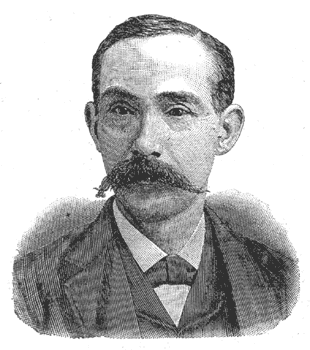 |
| William Joseph Dealy. |
and coke in the world, but once Mr. Reid's messenger at Pittsburgh: "It must have been somewhere in the winter of 1847-48 that a very small boy, with a curious stray lock or two of very light hair falling across a well-developed brow, with a look alike confident and modest, and with a vernacular very decidedly Scotch, applied for employment at the office of the Atlantic & Ohio Telegraph Company iu Pittsburgh, Pa. He gave his name as Andrew Carnegie, born in Dunfermline, Scotland, in 1835, and who was at that time, although barely thirteen years of age, running a small stationary engine in a cellar not far off. Of course the smell of heather so discernible upon him was not greatly against him in the eyes of a man born at Dumbiedykes, and so 'Andie' was engaged as messenger at $2.50 per week. Of Mr. Carnegie's entrance into the Pittsburgh telegraph office he was since written: 'My entrance into the telegraph office was the transition from darkness to light; from firing a small engine in a dirty cellar to a clean office where there were books and papers. That was paradise to me, and I bless my stars that sent me to be a messenger boy in a Pittsburgh telegraph office.' As a messenger, young Carnegie showed himself prompt, reliable and knowing, and soon became a favorite." A neat little touch is put in as to Dr. Norvin Green: "Here the chief officer may always be fourd, usually smoking a good cigar, and at the same time disposing of a large round of duties, and receiving numerous visitors with a leisureliness which indicates the mastery of labor." This is not bad, either, about Vice-President Van Home of the Western Union: "He is tall, spare, square-shouldered and of unhurried and thoughtful movement. His eyes are gray, a little repellant — as if on guard — and there is a roundness of the head above the ears that indicates will. Yet his look is unassertive, thoughtful and lonesome. There is an utter absence of self-consciousness. His manners are quiet, as of a man who had some thinking to do of his own which he did not care to reveal. But he opens up like a morning-glory to the touch of humor. He delights in, a good story, and can laugh from his eyebrows to his toes, hugging his lifted knees in keen delight." Friends of Georges d'Infreville will be amused when they see him sent down to posterity as "an effervescing Frenchman, good hearted, full of knowledge, ingenious, valuable, spirited, impatient — he makes a court room lively as a witness." It is not to be supposed, however, that Mr. Reid confines his attentions to the company with which he is connected. He gives a large amount of information, succinctly, about the Baltimore & Ohio and other corporations, as well as about the men who carry on their work. Thus of Mr. John E. Zeublin, now General Superintendent at Chicago for the Baltimore & Ohio, we have this about his war service: "He was detailed by Gen. Eckert to join the construction corps under Dennis Doreu. He was much surprised one fine morning
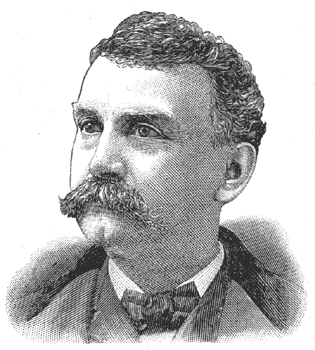 |
| Gerritt Smith. |
by being stirred out from a Confederate coffin, into which he had gone to rest, by his sleepless chief rousing him in somewhat warlike tones to commence a march on Strasburgh. Mr. Doren, who is a good judge of men, and who, when on duty on the field, needed men of nerve and devotion, says of Mr. Zeublin: 'I suppose I routed him out of that coffin in a somewhat lively style, because I did not exactly need a man in a coffin at that time, but when he got out he proved a very lively corpse; there was no service too hard for him and no danger deterred him; when ordered to perform a duty, he would go through fire and water to do it; I had under me no better or brighter man.' After the battle of Antietam, be was summoned home, where not long afterward he raised a company to resist the Morgan raiders."
A very interesting chapter is devoted by Mr. Reid to the press and the telegraph, and the author therein tells, in new guise, a good story against himself. " The first serious undertaking to supply the Western press was the sending of the phenomenally long message of President Polk, December, 1848. Arrangements had been made to attempt by one manipulation to send it to Pittsburgh, Cleveland, Detroit, Buffalo, Zanesville, Columbus, Cincinnati, Louisville and St. Louis. But on account of' a severe storm, which set in soon after its successful commencement, it took two nights and part of one day to complete. The operators were thoroughly exhausted. At Pittsburgh, the superintendent, who had been up for two nights, and
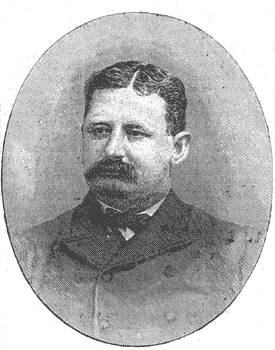 |
| John J. Kiernan. |
whose own eyes were nearly closed with sleep, had to relieve the overpowered operator, took the key, and after some weary hours, finished the message by unconsciously sending over the wire in the joy of a great relief, the cry of the Spaniard, with the, name of the President, 'God and Liberty! James K. Polk!' Some of the wearied editors published both to the world! How they howled next day! George D. Prentiss asked in the Louisville Journal with irreverent sharpness, 'What had James K, Polk to do with either God or liberty?' and thought the miscreant operator should be publicly beaten with Santa Anna's wooden leg. Was he discharged? Well, he might have been, but he could not well discharge himself, and — he still lives to write this record against himself."
On a variety of important points, this second edition is full of valuable matter. An excellent table is given of the telegraph companies in America, and it will doubtless surprise many people to learn that the number is 317. The total mileage of wire is 671,002 as compared with 1,022,500 in all Europe, Asia and Africa. The total number of telegraph employes in the world is set down at 324,773. With regard to the growing use of the Wheatstone system by the Western Union Company, Mr. Reid writes: "One important addition to the means of rapid transmission in the operating room is the introduction of the Wheatstone system of duplex automatic transmission. Its use in England in sending large masses of press matter was well known. It increased the value of a wire, but required a large accession of workers, and involved the hazards of imperfect and slovenly copy. The introduction of the typewriter gave promise of advantage with the Wheatstone, and attention was directed to the general system. In 1874, when Gen. Eckert and Mr. G. B. Prescott visited Europe on a tour of information, they brought with them a set of the Wheatstone machinery to add to the telegraphic museum of the electrician's department. No use was made of it, except in seme of the tests in working out the quadruple system under Mr. Edison. In 1881, however, as public demand upon the wires had greatly increased, and their multiplication to transmit the business of the country began to be a somewhat perplexing problem. Mr. George A. Hamilton, of the electrician's department,
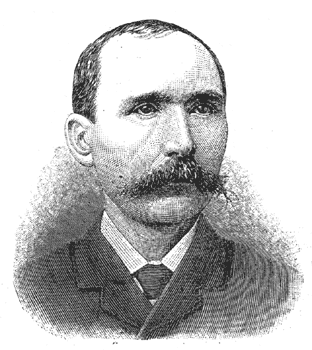 |
| Thomas Brennan. |
ws instructed to attempt the use of the Wheatstone, between New York and Chicago, in the transmission of ordinary business The attempt was successful enough to determine the company to introduce it." The system is now in constant use between New York and St. Louis, New York and Chicago, New York and New Orleans, St. Louis and Kansas City, and Kansas City and Chicago, while other extensions are in active preparation. One other subject handled is the strike of 1883. As the sympathies of this paper were then aroused and exerted in behalf of the operators, it is not to be expected that we can approve very warmly Mr. Reid's version of the sad affair, writing as he does from an official standpoint; but we will say this for him, that while his pen and his intellect are employed in recording the various incidents as the officials saw them at the time, he is not without some very tender-feelings for those who fought and suffered on the losing side. He says, "speeches were made full of the fire of youthful blood, and yet which were worthily marked with deprecation of violent methods to secure their ends;" and he says, too, with truth that "there was without doubt much heroism."
The book will be ready early next month, when the demand will naturally be great. The first edition cannot now be got, and this second will in a very few years be held at, double and treble price, being limited to a thousand copies. We understand from Mr. Reid that he will publish it in beveled cloth boards for five dollars, and in Russia leather for eight. When to what we have said about the illustrations, we add that it will contain close on 1,000 pages, admirably printed on fine paper, it will be seen that the book is one that all should have, and can have, it they are prompt in securing copies.
